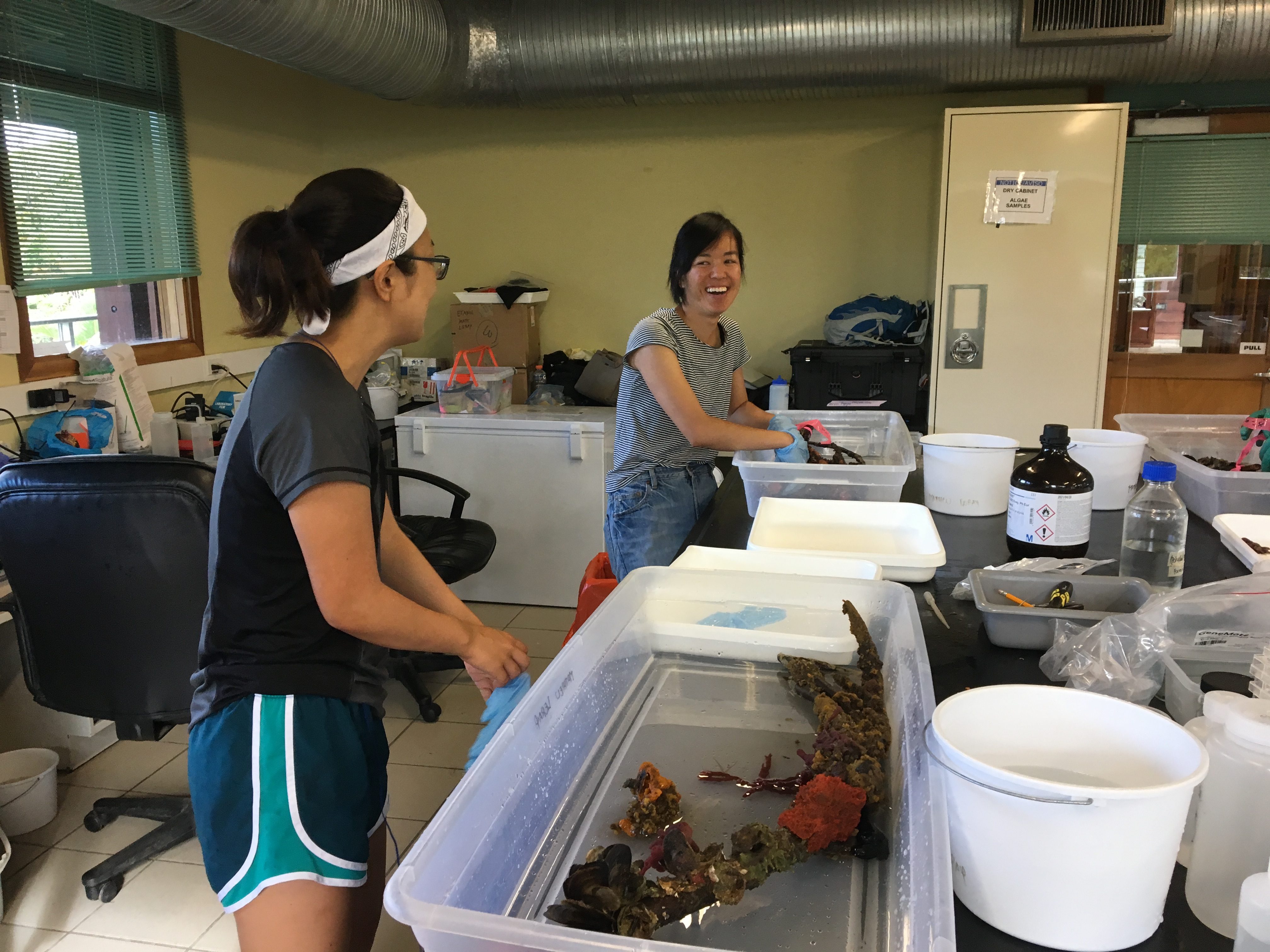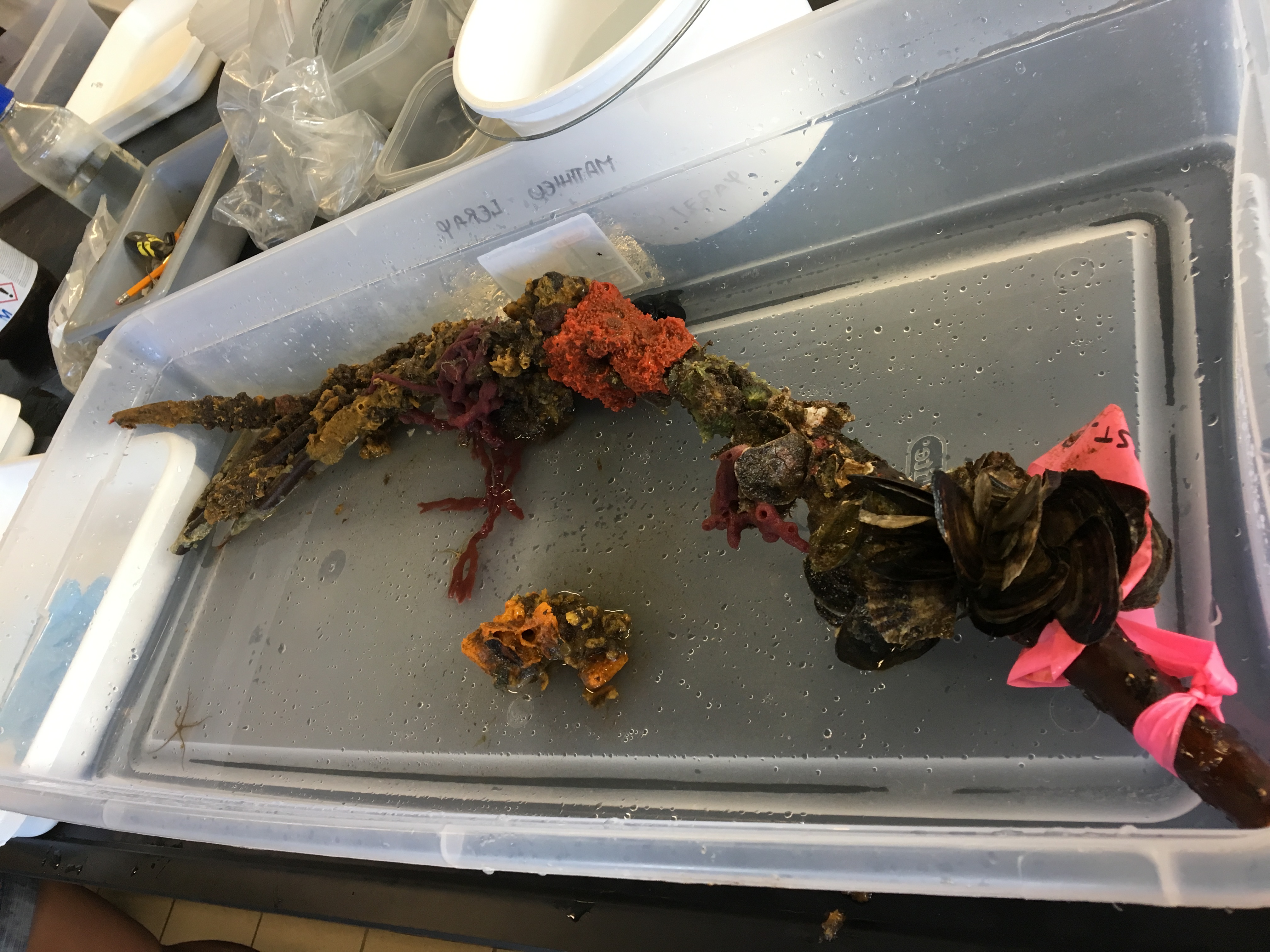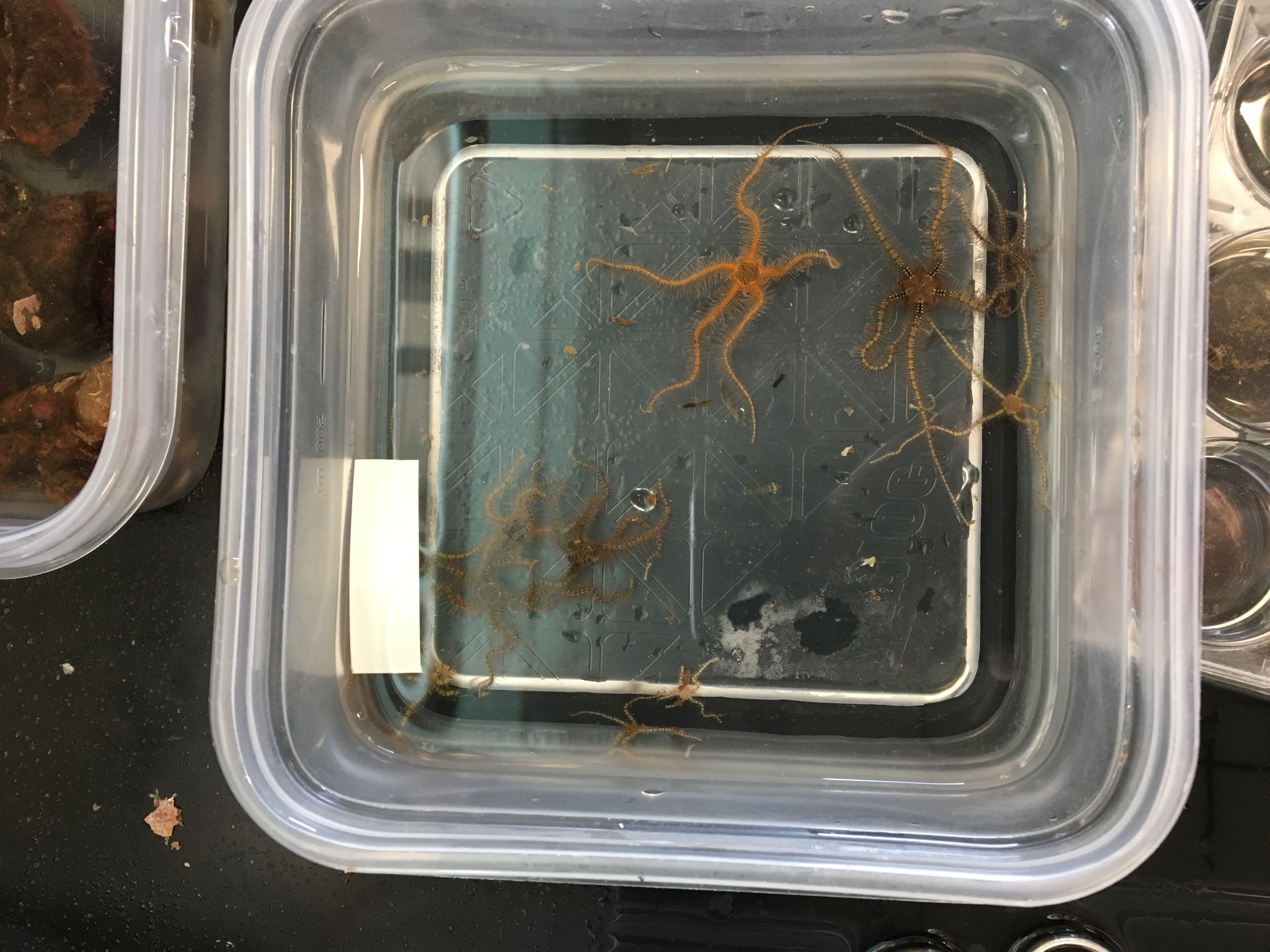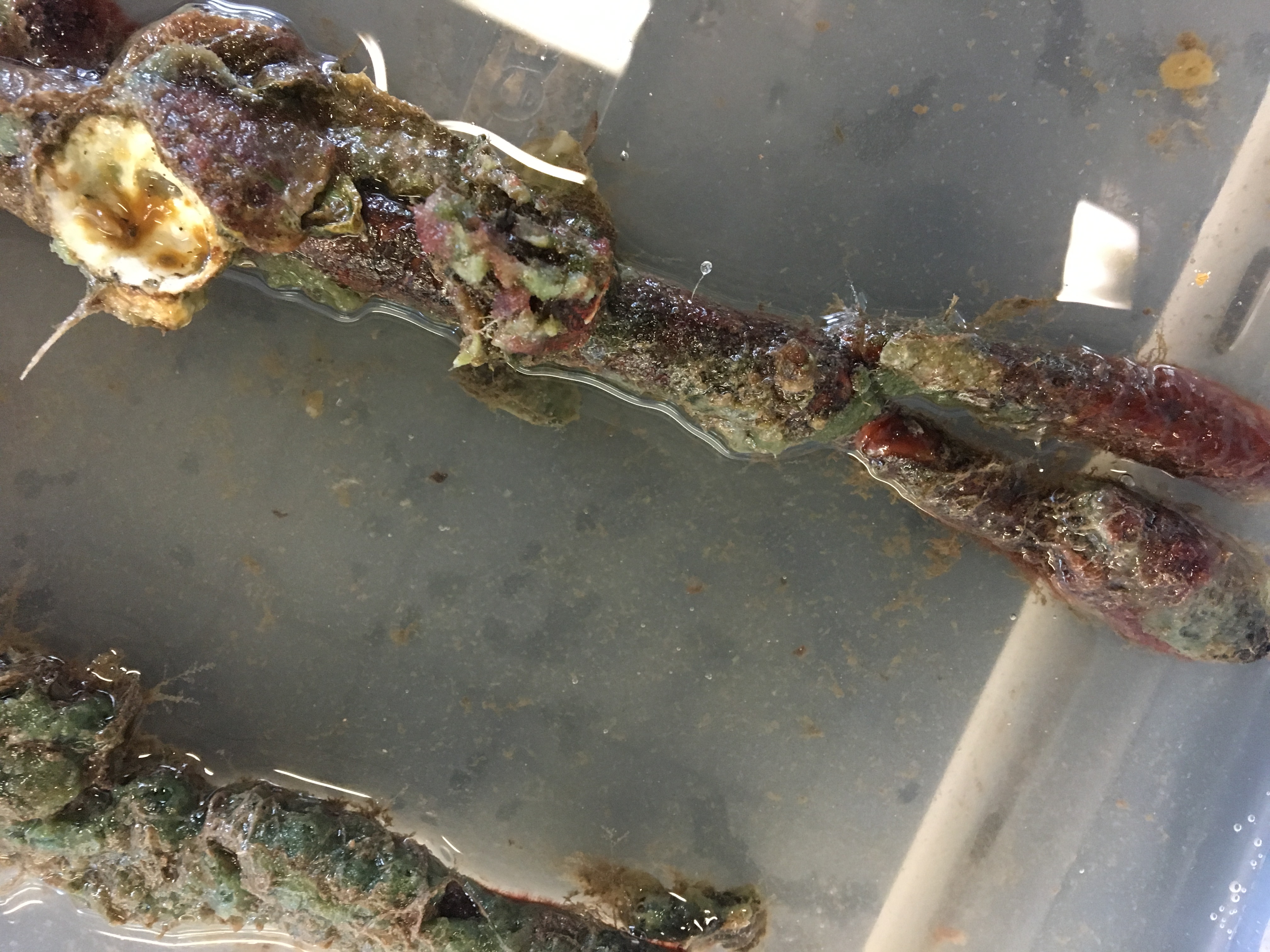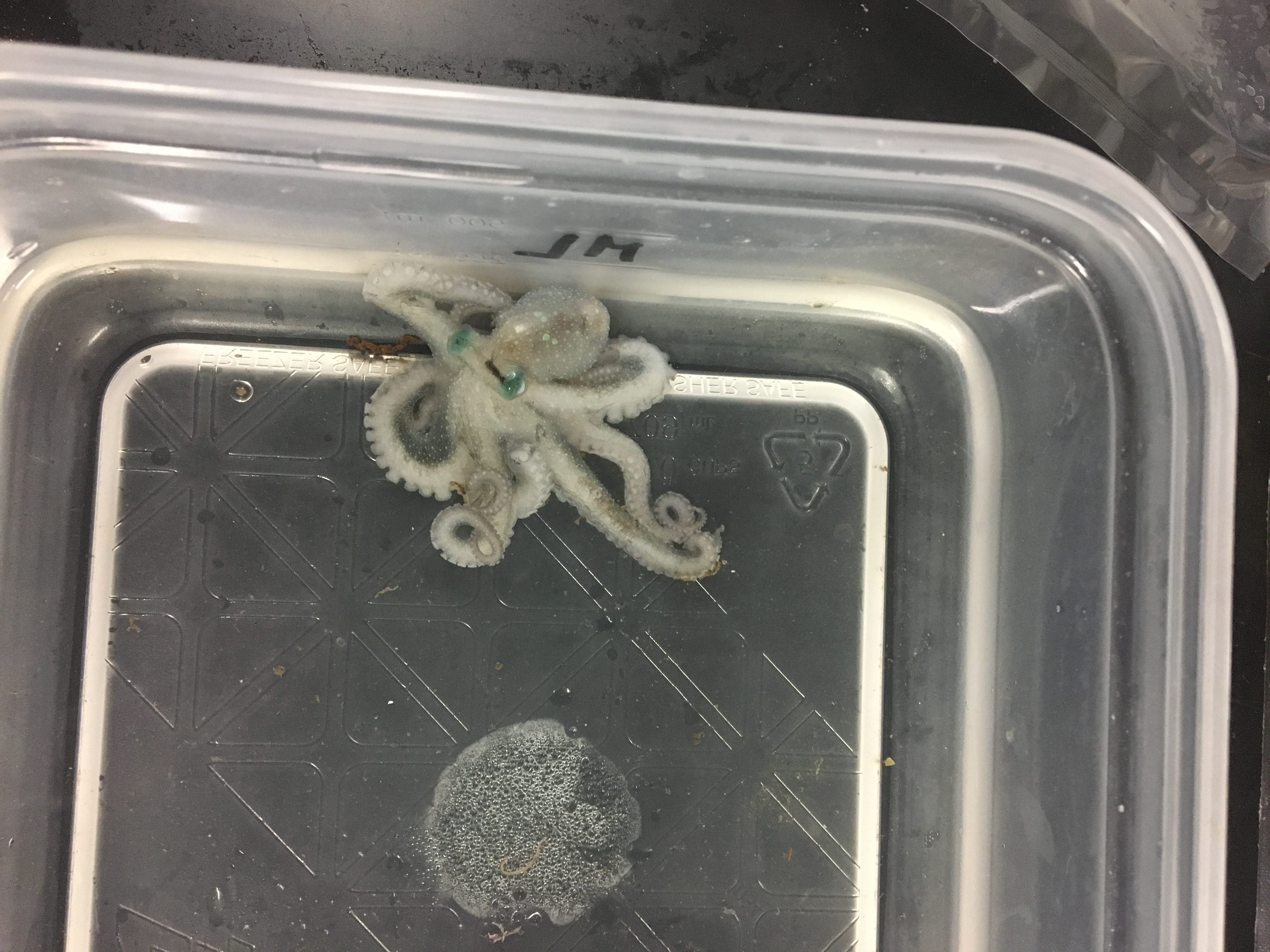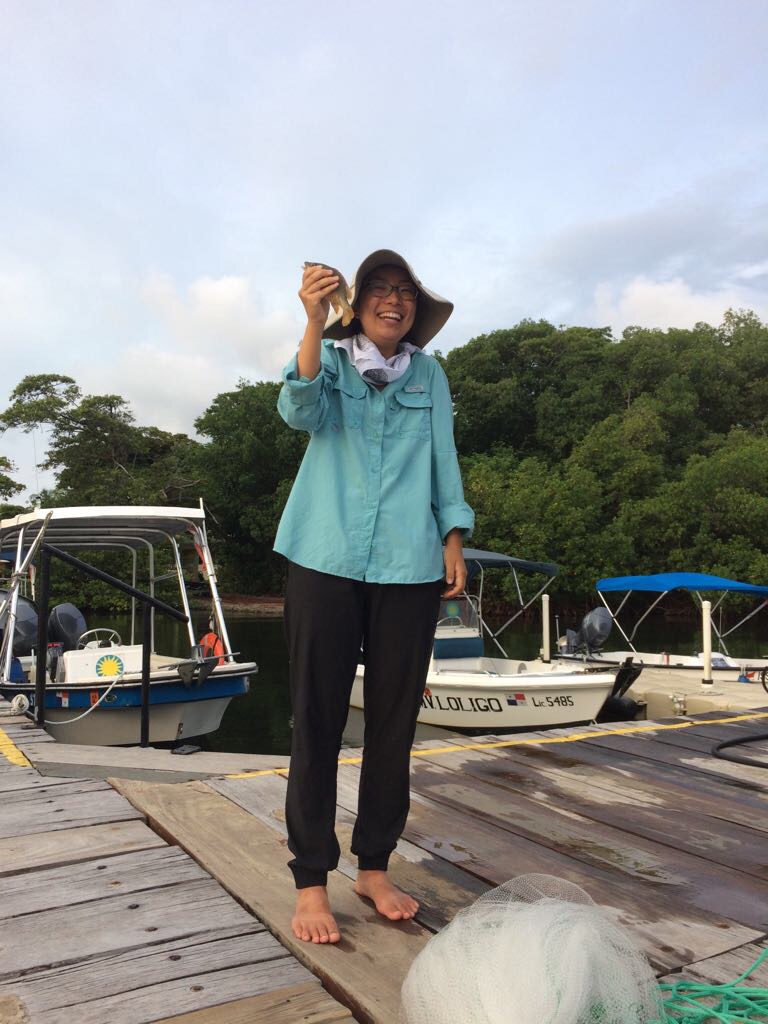Our lab just finished processing 160+ mangrove roots, which constitutes the largest mangrove biodiversity survey effort attempted…ever.
(Almost) every day for the past 3 weeks, we have been tirelessly going through mangrove roots from different mangrove forests around the archipelago and quantifying their biodiversity by carefully collecting organisms and processing every single aspect of the root – down to the water that it came in.
Here is the final root I will be doing for a long, long time:
Living on and inside this root included shrimps, brittle stars, crabs, tunicates, amphipods, isopods, flatworms (and other worms), and more. It’s incredible to think that the roots of a tree can support so much marine life on its own.

Here it is! The crab covered itself in sponges for camouflage and you can sort-of see its back on the top center of the previous photo.
Some other cool organisms that were found on our roots and collected in the water:

Check out this Lettuce Sea Slug (Elysia crispata)! These are part of the group of organisms that exhibit Kleptoplasty, or the ability to steal chloroplasts from their food sources and use them. That makes them solar-powered sea slugs!
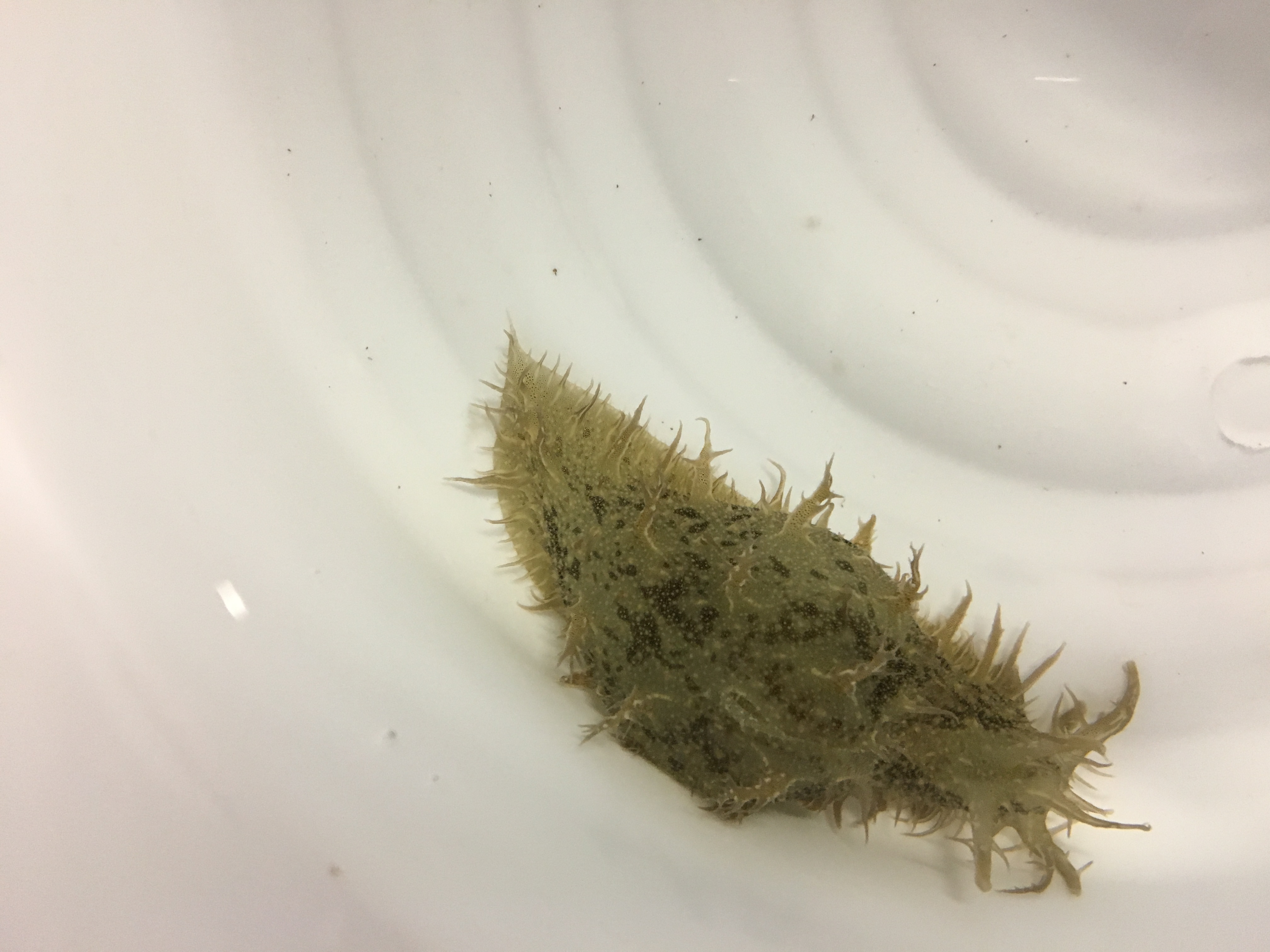
This guy is known as a sea hare (genus Aplysia) and was very active throughout the day! They are medium to extremely large-sized sea slugs.
To celebrate the end of processing mangrove roots, I went fishing off the dock. After writing about Rosalyn’s research on microplastics in seafood a few days ago, we are going to try and see if we can examine fish guts here from species that are generalists (not picky eaters). I haven’t been fishing for a long time and stopped after learning about overfishing…but for science, I gave it another shot. To be honest, it was quite fun, especially after I caught a snapper and was able to let it go!
